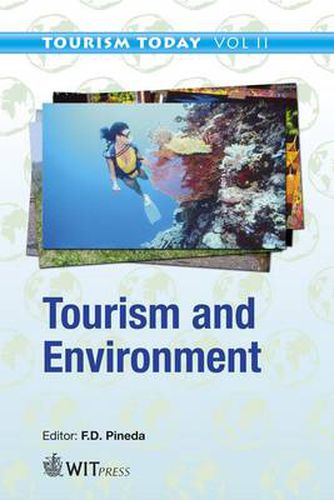Readings Newsletter
Become a Readings Member to make your shopping experience even easier.
Sign in or sign up for free!
You’re not far away from qualifying for FREE standard shipping within Australia
You’ve qualified for FREE standard shipping within Australia
The cart is loading…






This title is printed to order. This book may have been self-published. If so, we cannot guarantee the quality of the content. In the main most books will have gone through the editing process however some may not. We therefore suggest that you be aware of this before ordering this book. If in doubt check either the author or publisher’s details as we are unable to accept any returns unless they are faulty. Please contact us if you have any questions.
The contributions contained in this volume deal with two perspectives of ‘tourism and environment’; the ‘role of the environment in tourism’ and ‘environmental tourism’. The same message would be expected in both cases. The environment comprises the set of biophysical and cultural events surrounding us and influences the activities developed depending on time and site. Among the environmental characteristics of a region, climate is usually the most relevant and conditions almost all other components. Climate defines much of the natural, as well as the urban cultural landscape and the countryside of an area. Seasonal environmental change affects the life and culture of each place and largely explains the choice of destination of travellers. Environment and landscape therefore give rise to an interesting and varying relationship over the year. Thus, coastal landscapes are not inherently more beautiful in summer than in other seasons but environmental conditions cause a greater demand in this season. Certain places in the world captivate visitors who flock to them in large numbers.Local people recognize the benefit of this, employers become interested in the economic aspects and so the tourism infrastructure develops. The appeal of ‘good climate’ has led to a change from a rural subsistence culture to a lucrative services economy in some areas. Unfortunately however in many cases short-sightedness and corruption can lead to the ruin of the natural landscape. Situations like this are now common throughout the world due to the environmental mismanagement of tourism. Local populations within emerging tourism-based economies should learn this lesson. The papers included in this volume address important issues related to tourism and the environment and offer a better understanding of some of the current challenges.
$9.00 standard shipping within Australia
FREE standard shipping within Australia for orders over $100.00
Express & International shipping calculated at checkout
This title is printed to order. This book may have been self-published. If so, we cannot guarantee the quality of the content. In the main most books will have gone through the editing process however some may not. We therefore suggest that you be aware of this before ordering this book. If in doubt check either the author or publisher’s details as we are unable to accept any returns unless they are faulty. Please contact us if you have any questions.
The contributions contained in this volume deal with two perspectives of ‘tourism and environment’; the ‘role of the environment in tourism’ and ‘environmental tourism’. The same message would be expected in both cases. The environment comprises the set of biophysical and cultural events surrounding us and influences the activities developed depending on time and site. Among the environmental characteristics of a region, climate is usually the most relevant and conditions almost all other components. Climate defines much of the natural, as well as the urban cultural landscape and the countryside of an area. Seasonal environmental change affects the life and culture of each place and largely explains the choice of destination of travellers. Environment and landscape therefore give rise to an interesting and varying relationship over the year. Thus, coastal landscapes are not inherently more beautiful in summer than in other seasons but environmental conditions cause a greater demand in this season. Certain places in the world captivate visitors who flock to them in large numbers.Local people recognize the benefit of this, employers become interested in the economic aspects and so the tourism infrastructure develops. The appeal of ‘good climate’ has led to a change from a rural subsistence culture to a lucrative services economy in some areas. Unfortunately however in many cases short-sightedness and corruption can lead to the ruin of the natural landscape. Situations like this are now common throughout the world due to the environmental mismanagement of tourism. Local populations within emerging tourism-based economies should learn this lesson. The papers included in this volume address important issues related to tourism and the environment and offer a better understanding of some of the current challenges.